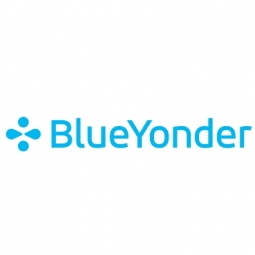公司规模
Large Corporate
地区
- America
国家
- United States
产品
- JDA Warehouse Management solution
技术栈
- Warehouse Management System
实施规模
- Enterprise-wide Deployment
影响指标
- Customer Satisfaction
- Productivity Improvements
技术
- 功能应用 - 仓库管理系统 (WMS)
适用行业
- 食品与饮料
适用功能
- 仓库和库存管理
用例
- 库存管理
服务
- 系统集成
关于客户
JBS Swift & Company 是世界上最大的牛肉生产商,业务遍及美国、巴西、阿根廷、澳大利亚和意大利。该公司为美国和国际市场的客户加工、准备、包装、销售和运送新鲜、加工和增值的牛肉和猪肉产品。作为一家拥有知名品牌的领先公司,客户满意度对 JBS Swift & Company 至关重要。该公司秉承“完美搭配、完美工厂、完美订单”的座右铭,这意味着利用原材料生产出最好的产品,尽可能高效地运营工厂,并在客户需要时准确交付他们订购的产品。
挑战
JBS Swift & Company 是全球最大的牛肉生产商,其仓库管理系统面临挑战。该公司在多个国家开展业务,在美国拥有三个仓库,运行不同的系统。由于缺乏通用平台,导致效率低下、沟通问题和缺乏可视性。该公司已在其中一个仓库使用 JDA,经过广泛的研究和咨询行业分析师后,决定在其位于内布拉斯加州大岛的工厂升级 JDA 解决方案,并在其他两个工厂实施。该公司之所以选择 JDA,是因为该技术非常适合他们的需求,并且该系统为流程变更提供了灵活性。JBS Swift & Company 具有复杂的供应链需求,每个仓库都是制造工厂的延伸。该公司需要跟踪和管理库存,从加工厂收货到整个加工过程,再到入库,再到最终零售目的地。由于该公司从事食品行业,因此还必须满足额外的安全和可追溯性要求。
解决方案
JBS Swift & Company 于 2007 年夏天在其位于内布拉斯加州格兰德岛的工厂升级了 JDA 仓库管理解决方案,并于 2007 年秋季和 2008 年冬季将该解决方案推广到另外两个工厂。位于内布拉斯加州格兰德岛的工厂是加工厂和 56,000 平方英尺配送中心的结合体。JDA 为 JBS Swift & Company 提供了商品可视性以及将产品从加工无缝转移到存储和配送的能力。该公司以配送中心作为其制造工厂的延伸,实行非常精益的运营。产品必须在整个链条中保持流动,以避免出现任何瓶颈。通过实施 JDA,JBS Swift & Company 的目标是提高生产力、提高系统可支持性、促进有效的变更控制管理并通过提高完美订单百分比来提高客户满意度。
运营影响

Case Study missing?
Start adding your own!
Register with your work email and create a new case study profile for your business.
相关案例.

Case Study
The Kellogg Company
Kellogg keeps a close eye on its trade spend, analyzing large volumes of data and running complex simulations to predict which promotional activities will be the most effective. Kellogg needed to decrease the trade spend but its traditional relational database on premises could not keep up with the pace of demand.

Case Study
HEINEKEN Uses the Cloud to Reach 10.5 Million Consumers
For 2012 campaign, the Bond promotion, it planned to launch the campaign at the same time everywhere on the planet. That created unprecedented challenges for HEINEKEN—nowhere more so than in its technology operation. The primary digital content for the campaign was a 100-megabyte movie that had to play flawlessly for millions of viewers worldwide. After all, Bond never fails. No one was going to tolerate a technology failure that might bruise his brand.Previously, HEINEKEN had supported digital media at its outsourced datacenter. But that datacenter lacked the computing resources HEINEKEN needed, and building them—especially to support peak traffic that would total millions of simultaneous hits—would have been both time-consuming and expensive. Nor would it have provided the geographic reach that HEINEKEN needed to minimize latency worldwide.

Case Study
Energy Management System at Sugar Industry
The company wanted to use the information from the system to claim under the renewable energy certificate scheme. The benefit to the company under the renewable energy certificates is Rs 75 million a year. To enable the above, an end-to-end solution for load monitoring, consumption monitoring, online data monitoring, automatic meter data acquisition which can be exported to SAP and other applications is required.

Case Study
Coca Cola Swaziland Conco Case Study
Coco Cola Swaziland, South Africa would like to find a solution that would enable the following results: - Reduce energy consumption by 20% in one year. - Formulate a series of strategic initiatives that would enlist the commitment of corporate management and create employee awareness while helping meet departmental targets and investing in tools that assist with energy management. - Formulate a series of tactical initiatives that would optimize energy usage on the shop floor. These would include charging forklifts and running cold rooms only during off-peak periods, running the dust extractors only during working hours and basing lights and air-conditioning on someone’s presence. - Increase visibility into the factory and other processes. - Enable limited, non-intrusive control functions for certain processes.

Case Study
Temperature Monitoring for Restaurant Food Storage
When it came to implementing a solution, Mr. Nesbitt had an idea of what functionality that he wanted. Although not mandated by Health Canada, Mr. Nesbitt wanted to ensure quality control issues met the highest possible standards as part of his commitment to top-of-class food services. This wish list included an easy-to use temperature-monitoring system that could provide a visible display of the temperatures of all of his refrigerators and freezers, including historical information so that he could review the performance of his equipment. It also had to provide alert notification (but email alerts and SMS text message alerts) to alert key staff in the event that a cooling system was exceeding pre-set warning limits.

Case Study
Coca-Cola Refreshments, U.S.
Coca-Cola Refreshments owns and manages Coca-Cola branded refrigerators in retail establishments. Legacy systems were used to locate equipment information by logging onto multiple servers which took up to 8 hours to update information on 30-40 units. The company had no overall visibility into equipment status or maintenance history.



